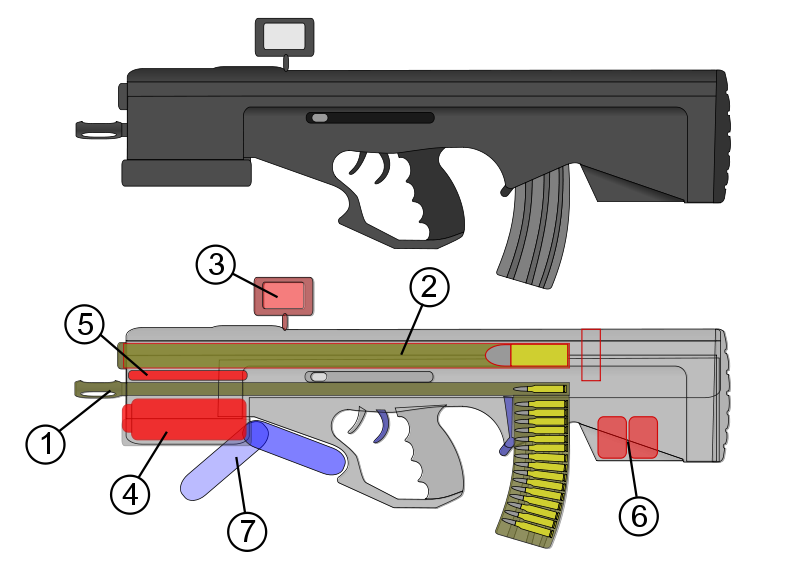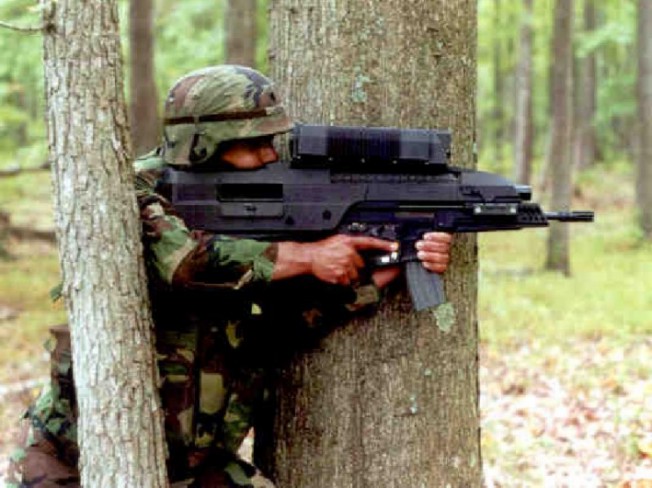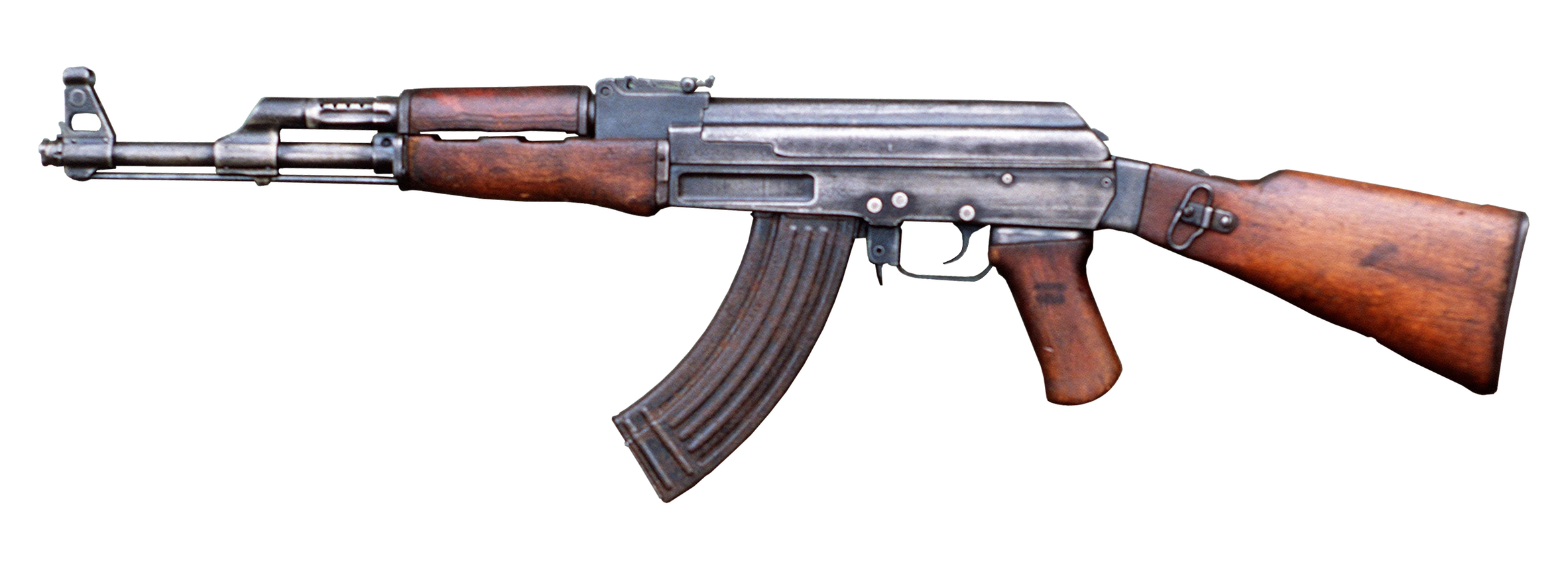The Heckler und Koch G-36 assault rifle had been born as HK-50 project in early 1990s. The reason behind that project was that the Bundeswehr (the German army), after the cancellation of the G11 and G41 projects, was left with outdated G3 rifle and no modern rifle, compatible with the current NATO standards at hands. Therefore the famous company Heckler & Koch was set to develop a new assault rifle for both German army and the export. The new 5.56mm assault rifle has been adopted by the Bundeswehr in the 1995, and in the 1999 the Spain adopted its slightly different, export version, G36E as its standard infantry rifle. The G36 also found its way into the hands of various law enforcement agencies worldwide, including British police and some US police departments. So far I've heard very few complaints about this rifle, and a lot of good revives and opinions. In fact, the only complaints about G36 that I know are the overheating of the handguards during the sustained fire, and the loose of zero of built in scope on some G36KE rifles, used by US police. Some German soldiers also complained about position of dual optical sights and those sights being easily fogged in bad weather (rain or snow). Otherwise it is a good rifle, accurate, reliable, simple in operations and maintenance, and available in a wide variety of versions - from the short-barreled Commando (some even said that it's a submachine gun) G36C and up to a standard G36 rifle. The MG36 squad automatic weapon (light machine gun), which was initially designed as a heavy-barreled version of the G36, was in fact a short-lived proposition that never went into mass production.
The G36, in severely modified form, was used as a "kinetic energy" part of the now-cancelled US XM-29 OICW weapon and it also served as a base for XM8 assault rifle (also cancelled).
Technical description.
From the technical point of view, the G36 is a radical departure from all the previous HK rifles, based on the proven G3 roller-delayed system. The G36 is a conventional gas operated, selective fire rifle, made from most modern materials and using most modern technologies.
The receiver and most of the others external parts of the G36 are made from reinforced polymers, with steel inserts where appropriate. The operating system appears to be a modification of the older American Armalite AR-18 rifle, with short stroke gas piston, located above the barrel, square-shaped bolt carrier and the typical rotating bolt with 7 locking lugs. Of cause, there also are many differences from the AR-18. The bolt carrier rides on a single guide rod, with the return spring around it. The charging handle is attached to the top of the bolt carrier and can be rotated to the left or to the right. When not in use, the charging handle aligns itself with the axis of the weapon under the pressure of its own spring, and reciprocates with the bolt group at the top of the receiver. The gas block is fitted with the self-adjustable gas valve that expels all the used gases forward, away from the shooter. The ejection window is located at the right side of the receiver and features a spent cases deflector to propel the ejected cases away from the face of the left-handed shooter.
All the major parts are assembled on the receiver using the cross- pins, so rifle can be disassembled and reassembled back without any tools.
The typical HK trigger unit is assembled in a separate plastic housing, integral with the pistol grip and the triggerguard. Thanks to this feature, a wide variety of firing mode combinations can be used on any rifle, simply by installing the appropriate trigger unit. Standard options are single shots, full automatic fire, 2 or 3 round bursts in any reasonable combinations. The default version is the single shots + 2 rounds burst + full auto. The ambidextrous fire selector lever also serves as a safety switch.
G36 is fed from the proprietary 30-rounds box magazines, made from translucent plastic. All magazines have special studs on its sides, so two or three magazines can be clipped together for faster reloading. The magazine housings of the G36 are made as a separate parts, so G36 can be easily adjusted to the various magazine interfaces. By the standard, the magazine release catch is located just behind the magazine, in the G3 or AK-47 style, rather than on the side of the magazine housing (M16-style). A 100-round Beta-C dual drum magazines of US origins also can be used (these magazines are standard for the MG36 squad automatic versions of the G36).
The side-folding skeletonized buttstock is standard on all G36 rifles. It folds to the right side and does not interfere with rifle operation when folded.
The standard sighting equipment of the G36 consists of the TWO scopes - one 3.5X telescope sight below, with the second 1X red-dot sight above it. The sights are completely independent, with the former suitable for long range accurate shooting, and the latter suitable for the fast target acquisition at the short ranges. Both sights are built into the plastic carrying handle. The export versions of the G36 are available with the single 1.5X telescope sight, with the emergency open sights molded into the top of the carrying handle. The subcompact G36K Commando version is available with the integral Picatinny-type scope and accessory rail instead of the carrying handle and standard sights.
The standard G36 rifles can be fitted with the HK AG36 40mm underbarrel grenade launcher. It also can be fitted with the bayonets. Interestingly enough, G36 uses an AK-74-type bayonets, which are left from the now non-existent NVA (East Germany Army) stocks.





















